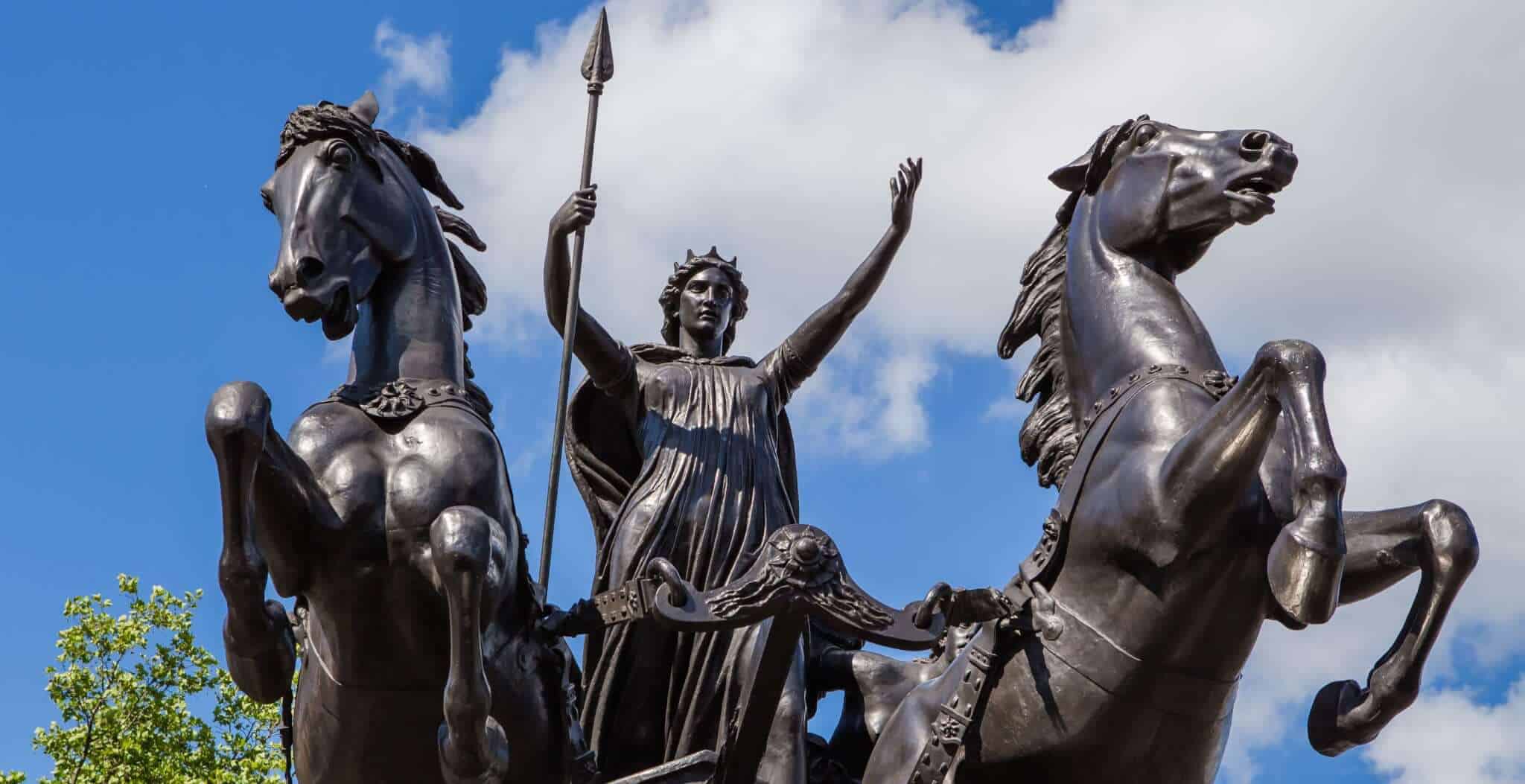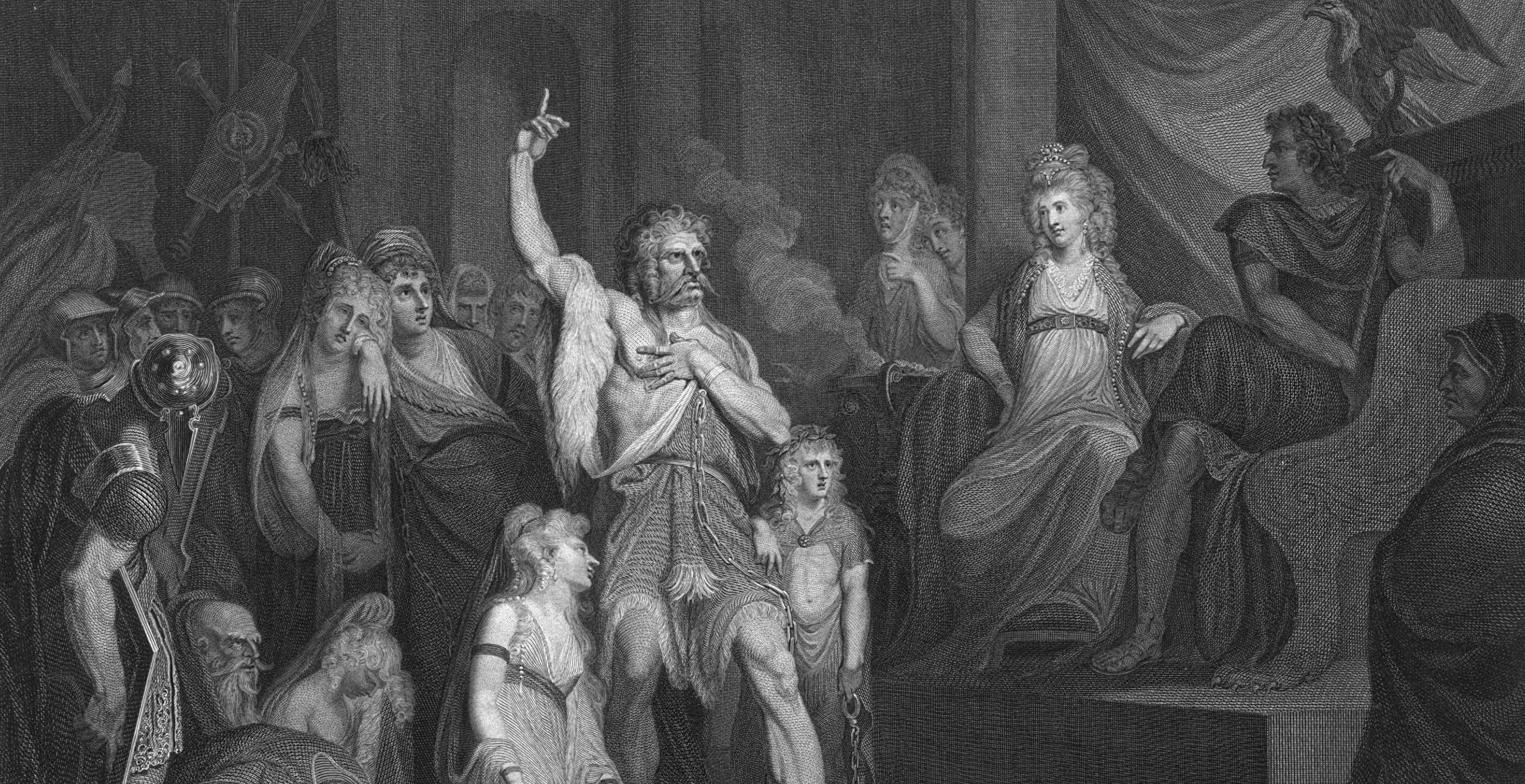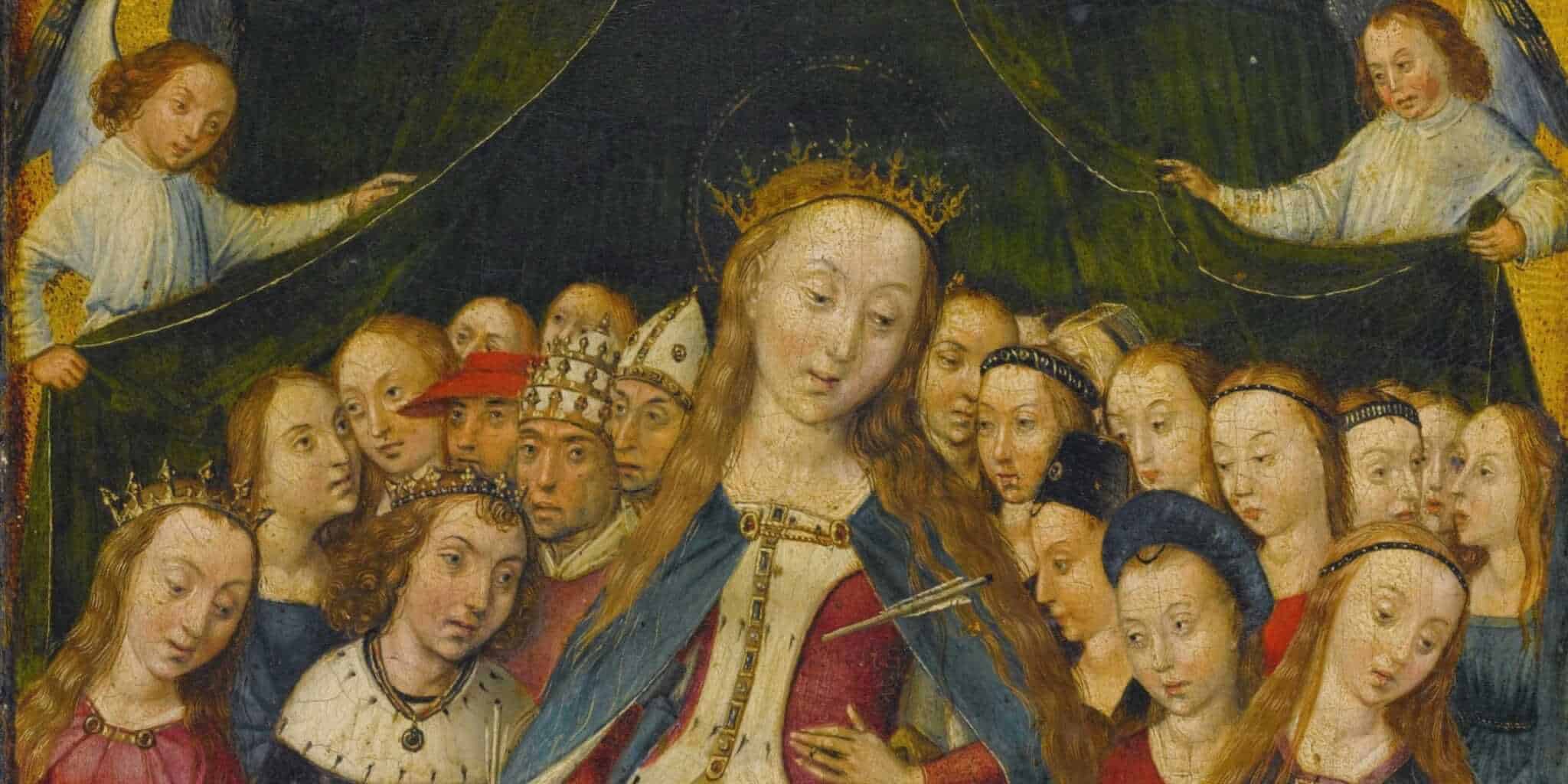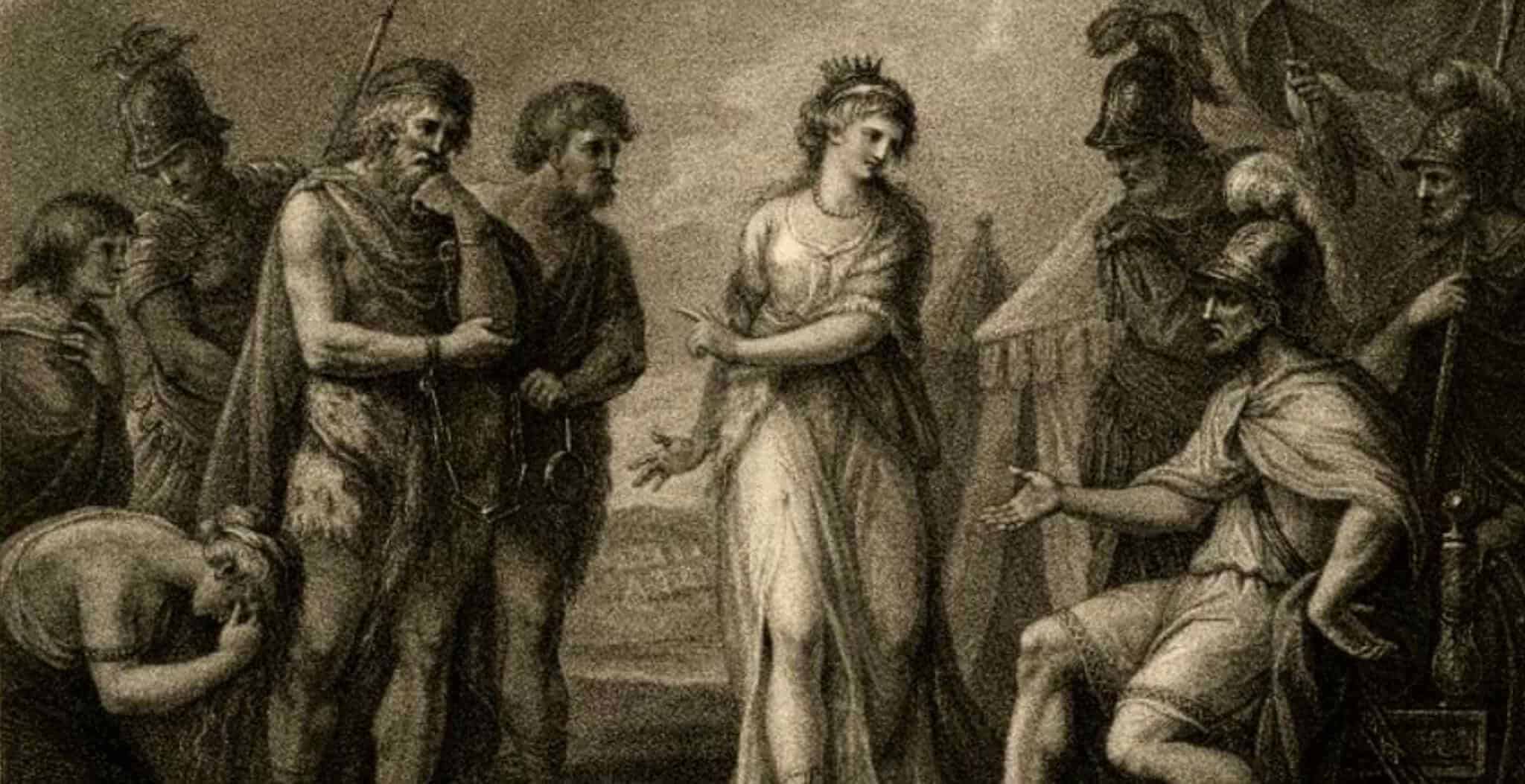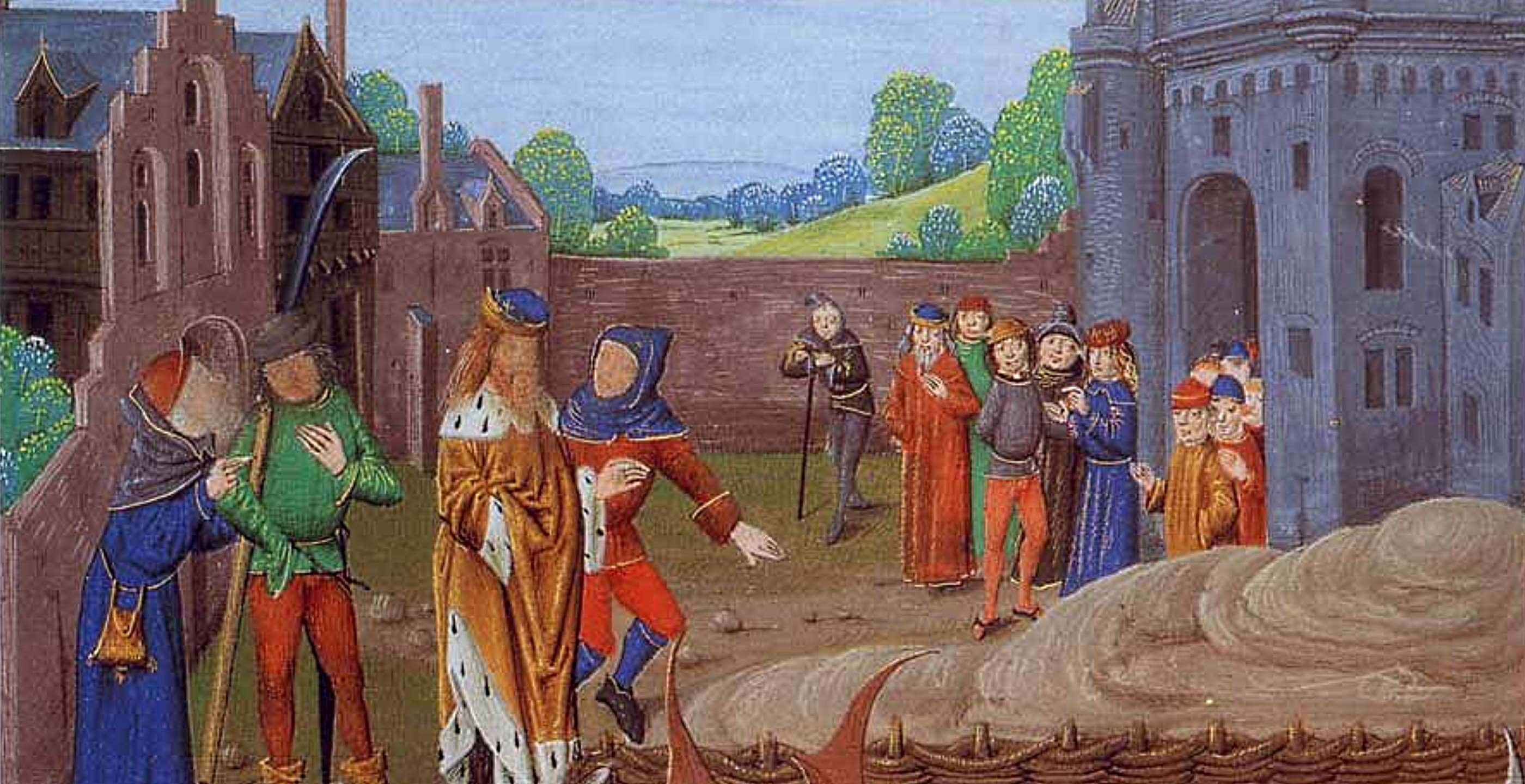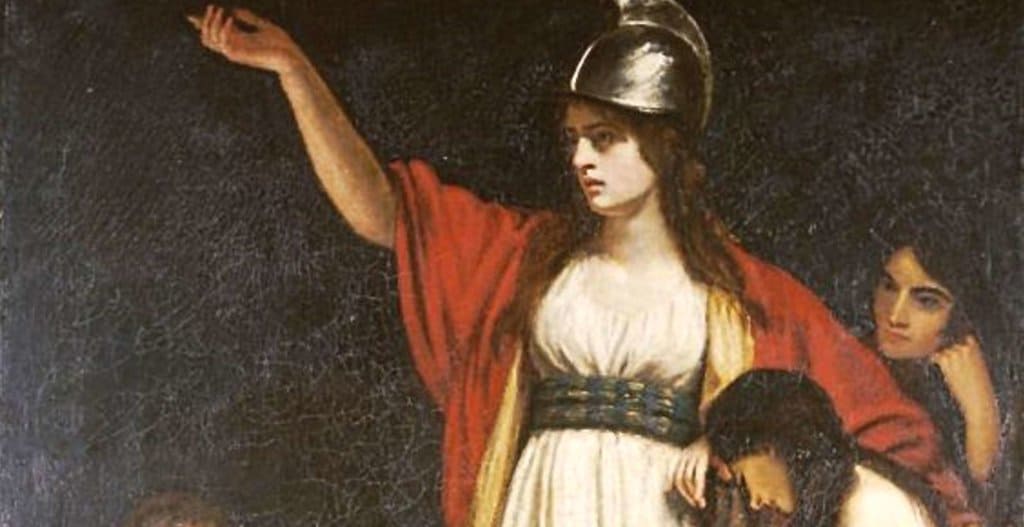Britain has produced many fierce, noble warriors down the ages who have fought to keep Britain free, but there was one formidable lady in history whose name will never be forgotten – Queen Boudica or Boadicea as she is more commonly called.
At the time of the Roman conquest of southern Britain Queen Boudica ruled the Iceni tribe of East Anglia alongside her husband King Prasutagus.
Boudica was a striking looking woman. – “She was very tall, the glance of her eye most fierce; her voice harsh. A great mass of the reddest hair fell down to her hips. Her appearance was terrifying.” – Definitely a lady to be noticed!
The trouble started when Prasutagus, hoping to curry favour with the Romans, made the Roman Emperor Nero co-heir with his daughters to his considerable kingdom and wealth. He hoped by this ploy, to keep his kingdom and household free from attack.
But no! Unfortunately the Roman Governor of Britain at that time was Suetonius Paulinus who had other ideas on the subject of lands and property. After Prasutagus’s death his lands and household were plundered by the Roman officers and their slaves.
Not content with taking all the property and lands, Suetonius had Prasutagus’ widow Boudica publicly flogged and her daughters were raped by Roman slaves!
Other Iceni chiefs suffered in a like manner and their families were treated like slaves.
Not surprisingly these outrages provoked the Iceni, Trinobantes and other tribes to rebel against the Romans.
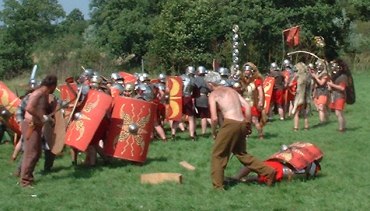
The Britons at first had great successes. They captured the hated Roman settlement of Camulodunum (Colchester) and the Roman division there was routed, the Imperial agent fleeing to Gaul.
Boudica and her allies gave no quarter in their victories and when Londinium (London) and Verulamium (St. Albans) were stormed, the defenders fled and the towns were sacked and burned! The revolting Britons even desecrated the Roman cemeteries, mutilating statues and breaking tombstones. Some of these mutilated statues can be seen today in Colchester Museum.
Finally Suetonius, who had made a tactical withdrawal (fled) with his troops into relative safety of the Roman military zone, decided to challenge Boudica. He assembled an army of 10,000 regulars and auxiliaries, the backbone of which was made up from the 14th Legion.
The Roman historian Tacitus in his ‘Annals of Rome’ gives a very vivid account of the final battle, which was fought in the Midlands of England, possibly at place called Mancetter near Nuneaton, in AD61.
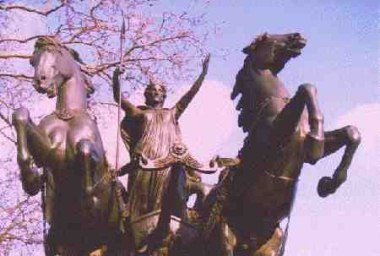
Boudica and her daughters drove round in her chariot to all her tribes before the battle, exhorting them to be brave. She cried that she was descended from mighty men but she was fighting as an ordinary person for her lost freedom, her bruised body and outraged daughters. Perhaps as taunt to the men in her ranks, it is said that she asked them to consider: ‘Win the battle or perish: that is what I, a woman will do; you men can live on in slavery if that’s what you want.’
The Britons attacked crowding in on the Roman defensive line. The order was given and a volley of several thousand heavy Roman javelins was thrown into the advancing Britons, followed quickly by a second volley. The lightly armed Britons must have suffered massive casualties within the first minutes of the battle. The Romans moved in for the kill, attacking in tight formation, stabbing with their short swords.
The Britons now had little chance, with so many of them involved in the battle it is likely that their massed ranks worked against them by restricting their movements so they were unable to use their long swords effectively. To ensure success the Roman cavalry was released which promptly encircled the enemy and began their slaughter from the rear. Seemingly mad with blood lust, Tacitus records that 80,000 Britons; men, women and children, were killed. The Roman losses amounted to 400 dead with a slightly larger number wounded.
Boudica was not killed in the battle but took poison rather than be taken alive by the Romans.
Boudica has secured a special place of her own in British folk history remembered for her courage; The Warrior Queen who fought the might of Rome. And in a way she did get her revenge, as in 1902 a bronze statue of her riding high in her chariot, designed by Thomas Thorneycroft, was placed on the Thames embankment next to the Houses of Parliament in the old Roman capital of Britain, Londinium – The ultimate in Girl Power!
